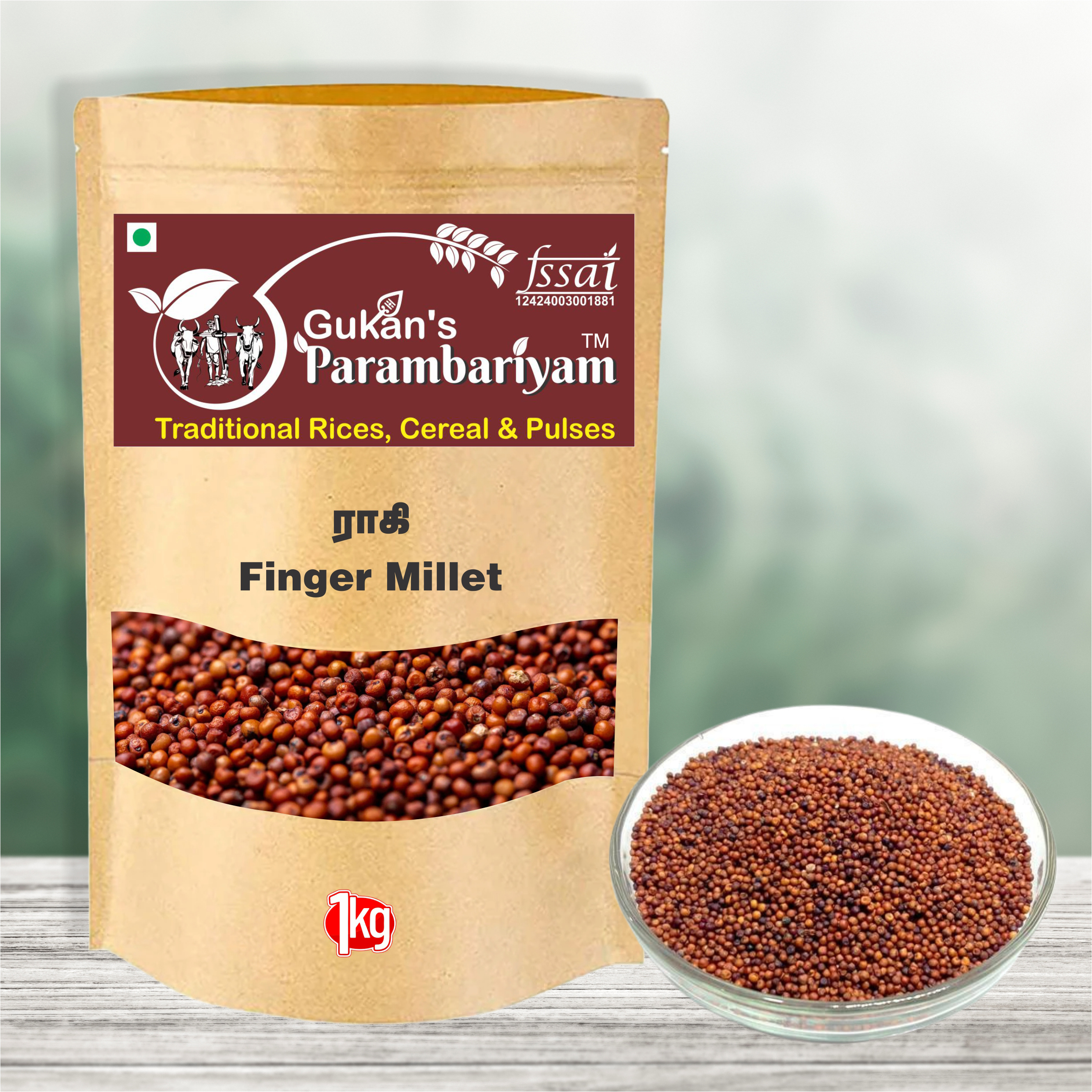
Finger Millet ராகி
Nutritious and natural whole grain
₹56.00
Out of stock
Finger Millet ராகி
Discover the wholesome goodness of our premium 1kg pack of finger millet, a nutritious, gluten-free grain perfect for health-conscious cooking and authentic traditional recipes. With its natural light brown color and fine texture, finger millet is an excellent source of protein, calcium, and essential minerals—ideal for porridge, baking, and a variety of hearty dishes. Elevate your meals with this versatile superfood, carefully selected for quality and freshness.
Ragi is a high protein food
Comparing the protein content of ragi with rice, some varieties of ragi have double the protein content of rice. More importantly, this protein is unique. Eleusinin, an important part of protein of high biological value, is easily assimilated by the body! And with it, tryptophan, cystine, methionine (tryptophan, cystine, methionine) and fragrant micro amino acids are completely present. As all these seem to be a very complex combination, we need to understand that they are essential for human health. Most grains are deficient in these elements. These high protein components give this cereal its anti-nutrition properties! It is a good protein food in vegetarian diet. Because it contains 5% methionine protein!
Ragi is concentrated in minerals
Ragi is also a grain rich in minerals. Ragi contains 5-30 times more calcium than other grains. Also, it is rich in minerals like phosphorus, potassium, and iron. Calcium is a very important mineral for bone strength and health. So ragi can be a great kibble instead of pills, especially for people with osteoporosis or low hemoglobin levels.
A study published by the US National Academies called The Lost Crops of Africa stated that Ragi is a nutritious breakfast food and indicated that the world needs to return to Ragi and that Ragi is the most nutritious of all grains. And research shows that people in Uganda and South Sudan have a healthy, well-built body just by consuming this food maybe once a day!
Ragi controls diabetes
As the incidence of diabetes, also known as diabetes, continues to rise, the demand for foods rich in fiber and beneficial phytochemicals along with carbohydrates has increased. Phytochemicals are a complex of diverse chemical molecules derived from plants that contain key factors believed to have disease-fighting potential. All of these qualities are usually found in the outer skin of the grain or the top of the seed, so it is best to eat the whole grain without the hull.
Especially in the outer skin of ragi, the amount of polyphenols is found in great concentration compared to rice, maida and wheat! For example, ragi contains 40 times more phenolic compounds compared to rice and 5 times more than wheat. In preliminary research, ragi controls blood sugar levels and hyperglycemic and oxidative stress. Wounds heal faster in people with diabetes!
Antimicrobial properties of ragi
Ragi has been found to be effective against a variety of bacteria such as Bacillus cerus, a food spoilage bacterium, Salmonella sp, which causes typhoid fever, and Staphylococcus auris, which causes primary skin diseases such as itching and hives!
Anti-cancer potential
Ragi is rich in antioxidants that are widely discussed in health texts today. Antioxidants prevent excess oxidation that causes cancer and aging caused by cell damage. It can be amazing! The phenolic acids, flavonoids and tannins in the skin of ragi have excellent antioxidant properties. In general, the risk of esophageal cancer is lower in people who eat whole grains than those who eat wheat and maida.
Ragi keeps you young
Small grains such as ragi (Kelvaraku) and varak contain phenolic and anti-oxidants, which are important anti-aging factors, and have the unique ability to inhibit molecular cross-linking, known as collagen cross-linking. Collagen cross-linking is the process by which cross-links form between collagen molecules in ligaments, skin, and blood vessels. Collagen is what gives tissues their elasticity. Its cross-linking reduces its efficiency. This leads to stiffness that is a common aging problem.
Ragi lowers bad cholesterol and prevents heart disease
A growing body of research shows that ragi, a small grain, has the potential to reduce the risk of heart disease. Technically speaking, ragi lowers serum triglycerides and inhibits lipid oxidation and LDL cholesterol oxidation. LDL - Low Density Lipoprotein Cholesterol is also known as bad cholesterol. More specifically, it can be troublesome when oxidized. Oxidized LDL inflames the arteries. This leads to atherosclerosis and an increased risk of heart attack or stroke.
